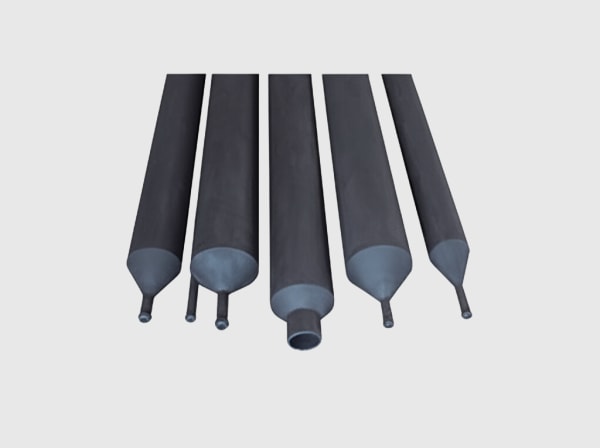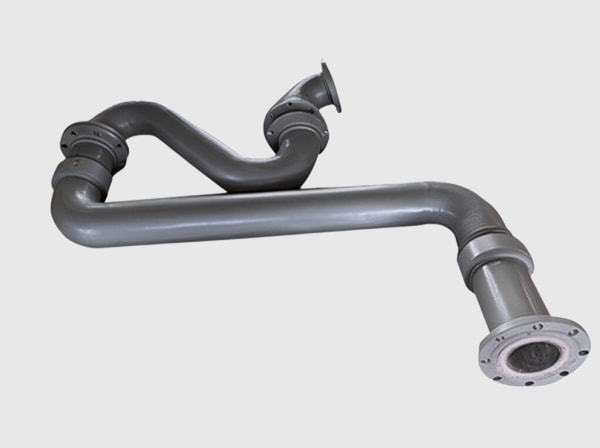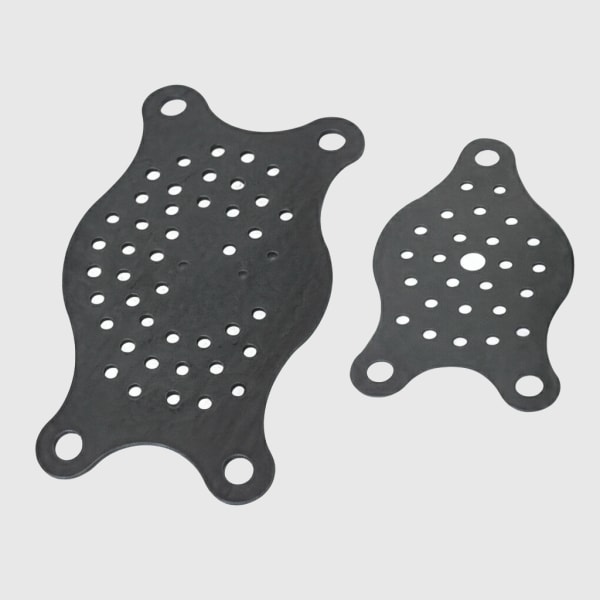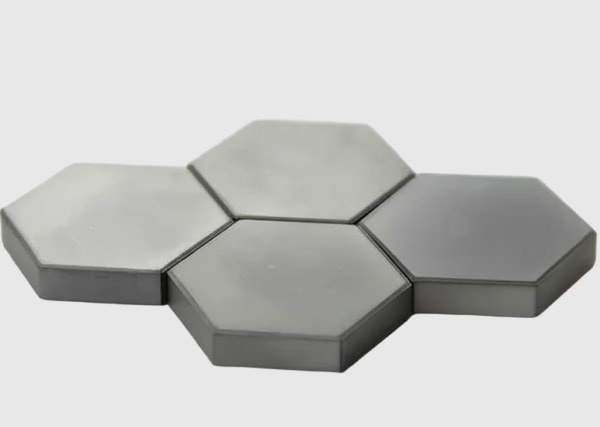製品概要と2025年の市場関連性
Silicon carbide (SiC) industrial rectifier bridge assemblies deliver low total harmonic distortion (THD), high efficiency, and exceptional thermal resilience for heavy-duty loads in Pakistan’s textile, cement, 鉄鋼, and emerging industrial sectors. Built using SiC high-power Schottky diodes and SiC MOSFET-based active front ends where required, these assemblies operate reliably at switching frequencies of 20–50 kHz, achieve rectification efficiency above 98%, and maintain performance in high-temperature, high-dust environments.
In 2025, plants across Punjab and Sindh face grid volatility, rising electricity tariffs, and space-constrained motor control centers. SiC rectifier bridges rated at ≥1700 V and ≥500 A (module level) enable 10%–15% annual energy savings, a 30%–40% reduction in cooling footprint, and >50% lower failure rates. They support 6/12/24-pulse architectures and AFE options for low THDi, improved power factor, and compliance with industrial estate requirements. Documentation aligns with IEC 62477-1 (safety), IEC 61000 (EMC), and IEC 60747 (semiconductor devices), while data interfaces facilitate ISO 50001 and ISO 14001 reporting. Integration with MODBUS TCP, PROFINET, EtherNet/IP, DNP3, and OPC UA simplifies deployment into existing SCADA/PLC ecosystems.

技術仕様と高度な機能
- 電気定格とトポロジー
- Input voltage: 400–690 VAC three-phase (MV step-down available)
- Output: High-current DC for drives, electrolysis, and furnace applications
- Device classes: SiC Schottky diodes and ≥1700 V SiC MOSFETs
- Current capability: ≥500 A per module; parallelable bridge legs for kA-class outputs
- Rectifier strategies: 6/12/24-pulse with interphase transformers; AFE option for low THDi and near-unity power factor
- スイッチングと制御
- Frequency: 20–50 kHz for compact magnetics and reduced ripple
- Control features: Soft-start/pre-charge, ride-through profiles for sags/swells, harmonic optimization via AFE algorithms
- Interfaces: MODBUS TCP, PROFINET, EtherNet/IP, DNP3, OPC UA; structured alarms and KPIs for maintenance
- 熱的および機械的設計
- Junction temperature: -55°C to 175°C device capability
- Thermal resistance: <0.2°C/W module level using AlN/Si3N4 substrates and optimized baseplates
- Cooling: Liquid-cooled cold plates or high-efficiency forced-air; 30%–40% smaller cooling systems
- Enclosure: IP54+ cabinet with positive-pressure filtration, conformal-coated PCBs, vibration-resistant mounts
- 保護と診断
- Fast short-circuit and desaturation protection (AFE), surge/arc suppression, DC link crowbar options
- Sensor suite: NTC/RTD temperature monitoring, coolant flow/pressure, input harmonics and DC ripple analysis
- Predictive maintenance: Parameter drift tracking (Vf, leakage, ESR), thermal impedance trend analysis
- コンプライアンスサポート
- Standards: IEC 62477-1, IEC 61000 series, IEC 60747
- Documentation: Acceptance test procedures and energy KPI logs for ISO 50001/14001 programs
Performance Advantages for Heavy-Duty Industrial Rectification
| Operations outcome | SiC Rectifier Bridge Assemblies (Low THD, High Efficiency) | Conventional Silicon Rectifier Bridges |
|---|---|---|
| Rectification efficiency | 低伝導/スイッチング損失で>98% | 通常90%〜94% |
| THDi and power factor | Low THDi with 12/24-pulse or AFE; PF near unity | Higher THDi; PF corrections required |
| Thermal footprint | 30%–40% smaller cooling systems | Larger heat sinks and HVAC load |
| High-temperature resilience | Stable to 175°C junction; less derating | Lower thermal margin; frequent derating |
| 粉塵/熱に対する信頼性 | >50% reduction in failure rates | Higher failure rates and maintenance |
| メンテナンス間隔 | 2年に1回 | 年に約2回 |
| 投資回収期間 | 2–3 years via energy/OPEX savings | より高いOPEXのため、より長い |
主要な利点と実績のあるメリット(専門家の洞察付き)
- Low THD and grid-friendly operation: Multi-pulse designs and AFE cut harmonic penalties and transformer heating.
- High efficiency at heavy loads: SiC Schottky’s negligible reverse recovery and low Vf reduce losses across the duty cycle.
- Compact and robust: High-frequency operation shrinks magnetics and cooling, easing retrofits in congested MCC rooms.
- Environmental durability: IP-rated cabinets, conformal coatings, and ceramic substrates ensure uptime in dust and heat.
専門家の言葉を引用する:
“SiC-based rectifiers drastically reduce switching loss and harmonic content, enabling compact, efficient power conversion that withstands harsh industrial environments.” — IEEE Power Electronics Magazine, Wide Bandgap in Industrial Rectification (2023)
権威ある参照:
“System-level OPEX reductions and power density gains will accelerate SiC adoption through 2025, particularly where reliability and THD compliance are critical.” — Yole Group, Power SiC Market Monitor (2024)
実際のアプリケーションと測定可能な成功事例
- Cement clinker workshop DC drives and rectifiers
- Result: Chain efficiency improved from 92.3% to 98.1%; THDi cut to utility thresholds using 12-pulse plus AFE; cooling skid footprint reduced by ~35%; annual electricity savings exceeded 120,000 USD; continuous operation increased from 8,000 to 8,760 hours in a Karachi plant.
- Steel melt shop furnace and auxiliary rectifiers
- Result: Reduced transformer hot-spot temperatures; fewer harmonic-related trips; improved torque stability on DC drives during sag events.
- 鉱山粉砕機とコンベヤー
- Result: Stable DC buses under load transients; predictive diagnostics flagged coolant filter clogging before thermal trip, avoiding downtime.

選択とメンテナンスの考慮事項
- Harmonic strategy: Choose 12/24-pulse for passive low THD; add AFE where strict THDi compliance or regenerative capability is required.
- Device rating and margins: Specify ≥1700 V class and size current for surge and overload profiles; validate short-circuit withstand coordination.
- Thermal engineering: Apply high-thermal-conductivity ceramics and verified TIMs; model coolant flow and ambient heat from adjacent furnaces/kilns.
- EMC and layout: Use low-inductance busbars, short gate loops, shielded control cables, and dv/dt filters to protect downstream equipment.
- Preventive maintenance (24-month cycle): Inspect thermal interfaces, torque busbar joints, clean/replace filters, test coolant chemistry, and update firmware.
業界の成功要因と顧客の声
- Success factors: Pre-install power-quality audit, transformer vector group alignment, cabinet airflow/pressure design, EMI/EMC validation, and operator training.
- Customer voice: “Upgrading to SiC rectifier bridges stabilized our DC buses and cut cooling energy, improving uptime and compliance.” — Electrical Maintenance Lead, integrated steel producer in Punjab.
将来のイノベーションと2025年以降の市場トレンド
- Higher-voltage platforms: Transition to 3.3 kV devices for medium-voltage rectification with fewer series components.
- Integrated intelligence: Edge analytics for harmonic trending, thermal impedance tracking, and predictive maintenance.
- Localization in Pakistan: Technology transfer and local assembly/testing for faster lead times and tailored service.
- Sustainability alignment: Direct contribution to ISO 50001 energy KPIs and reduced plant carbon intensity.
業界の見通し:
“Efficiency gains and harmonic control in front-end rectifiers are foundational to industrial decarbonization and power quality improvement.” — International Energy Agency, Technology Perspectives (2024)
よくある質問と専門家による回答
- How do SiC rectifier bridges lower THDi?
- By supporting 12/24-pulse topologies with low-loss devices and optional AFE, which actively shapes input currents to reduce harmonics and improve power factor.
- Can these assemblies retrofit into existing cabinets?
- Yes. Adapter busbars, mechanical plates, and control interface kits allow drop-in replacements while preserving transformers and wiring.
- What switching frequency should be used?
- 20–30 kHz suits high-power applications; up to 50 kHz is used to reduce ripple and passive size where EMI limits can be met.
- How are devices protected under grid disturbances?
- Surge suppression, ride-through control, pre-charge circuits, and crowbar options maintain stability during sags/swells and transient events.
- What are the typical lead times?
- Standard configurations ship in 6–10 weeks; customized ratings/enclosures in 10–14 weeks, with on-site commissioning support.
このソリューションがお客様の業務に役立つ理由
SiC industrial rectifier bridge assemblies provide low THD, high efficiency, and thermal robustness essential for Pakistan’s heavy-duty applications. By achieving >98% efficiency, reducing cooling hardware by 30%–40%, and lowering failure rates by over 50%, they deliver measurable OPEX savings and reliability. Seamless integration with existing infrastructure, compliance-ready documentation, and predictive diagnostics ensure faster acceptance and sustained performance.
カスタムソリューションについては専門家にご相談ください
Accelerate your rectifier modernization with comprehensive SiC expertise and turnkey delivery.
- 10年以上のSiC製造専門知識
- 中国科学院の支援とイノベーション
- R-SiC、SSiC、RBSiC、SiSiC全体でのカスタム製品開発
- 技術移転および工場設立サービス
- 材料処理から完成品までのターンキーソリューション
- 19以上の企業との実績
Request a free consultation, a plant-specific rectifier design review, and an ROI model. Secure an engineering slot for harmonic studies, thermal modeling, and pilot retrofit execution.
- Eメール:[email protected]
- 電話/WhatsApp:+86 133 6536 0038
Recommended next steps: Share single-line diagrams, transformer details, load profiles, and harmonic limits; schedule a power-quality audit; plan a pilot retrofit with measurable KPIs.
記事のメタデータ
- 最終更新日:2025年9月12日
- 次回の更新予定日:2026年3月31日
- References: IEEE Power Electronics Magazine (2023) Wide Bandgap in Industrial Rectification; Yole Group Power SiC Market Monitor (2024); International Energy Agency Technology Perspectives (2024)






